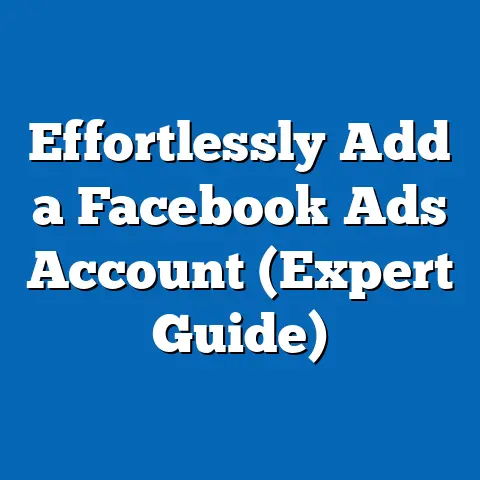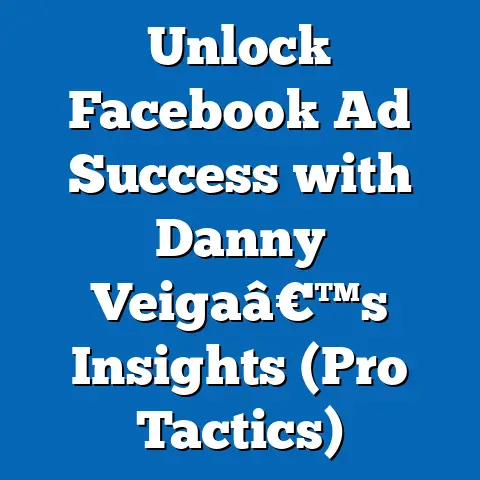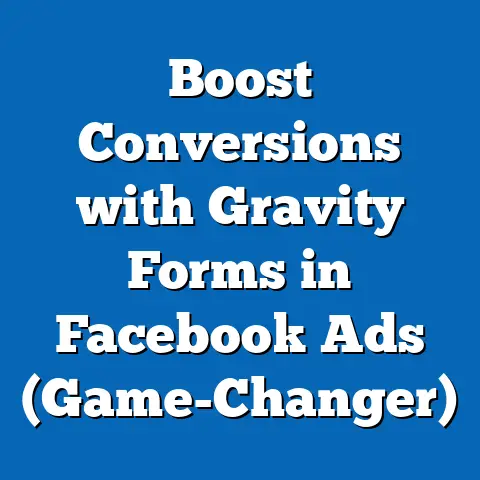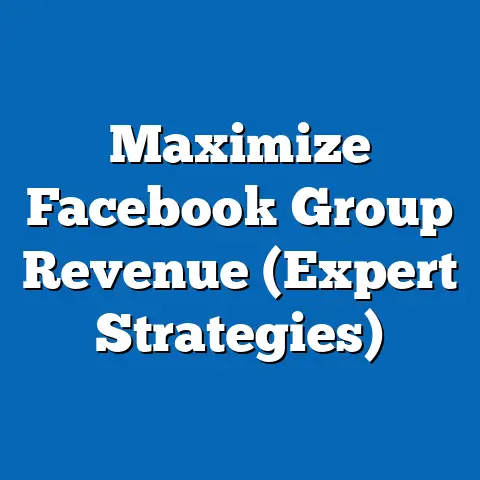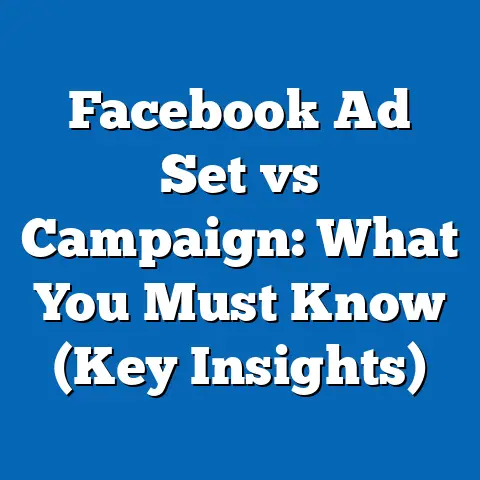Understanding Facebook Ads Payment (Master Budget)
In today’s digital age, Facebook advertising has become an indispensable tool for businesses of all sizes. But for those in the pet industry, it’s practically a lifeline. I’ve seen firsthand how a well-executed Facebook ad campaign can transform a struggling pet store into a thriving community hub, or help a local veterinarian connect with pet owners who desperately need their services. The pet industry has exploded in recent years, with more people than ever considering their furry, scaled, or feathered companions as integral members of their families. This emotional connection translates into significant spending, making pet owners a highly valuable target audience. From premium pet food and innovative toys to specialized healthcare and luxurious grooming services, the opportunities are endless.
However, diving into Facebook Ads without a solid understanding of how the payment system works is like navigating a maze blindfolded. You might end up spending a fortune without seeing any real results. That’s why mastering your Facebook Ads budget is absolutely crucial, especially if you’re in the pet business. Whether you’re launching a new line of organic pet food, promoting wellness check-ups at your veterinary clinic, or simply trying to build brand awareness for your pet supply store, understanding the ins and outs of Facebook Ads payment is the first step toward achieving your goals and maximizing your return on investment (ROI). Let’s explore how you can effectively manage your advertising spend and achieve success in the competitive pet market.
1. The Basics of Facebook Ads Payment
Before you start creating your Facebook Ads, it’s essential to understand the fundamental components of how Facebook Ads payment works. Facebook offers different payment models, each with its own advantages and disadvantages. The most common payment models include:
-
Cost Per Click (CPC): With CPC, you pay each time someone clicks on your ad. This model is ideal if your primary goal is to drive traffic to your website or landing page. For example, if you’re a dog grooming service looking to promote a special offer, CPC can help you get more potential customers to visit your website and book an appointment.
-
Cost Per Mille (CPM): CPM, also known as Cost Per Thousand Impressions, means you pay for every 1,000 times your ad is shown, regardless of whether people click on it. CPM is best suited for increasing brand awareness and reaching a large audience. A pet store launching a new line of organic pet food might use CPM to ensure their ad is seen by as many pet owners as possible, even if they don’t immediately click on it.
-
Cost Per Action (CPA): CPA allows you to pay only when someone takes a specific action, such as signing up for a newsletter, making a purchase, or downloading a resource. This model is perfect if you want to drive specific conversions. For instance, a local vet promoting wellness check-ups for pets might use CPA to pay only when someone books an appointment through the ad.
Cost Per Click (CPC): With CPC, you pay each time someone clicks on your ad. This model is ideal if your primary goal is to drive traffic to your website or landing page. For example, if you’re a dog grooming service looking to promote a special offer, CPC can help you get more potential customers to visit your website and book an appointment.
Cost Per Mille (CPM): CPM, also known as Cost Per Thousand Impressions, means you pay for every 1,000 times your ad is shown, regardless of whether people click on it. CPM is best suited for increasing brand awareness and reaching a large audience. A pet store launching a new line of organic pet food might use CPM to ensure their ad is seen by as many pet owners as possible, even if they don’t immediately click on it.
Cost Per Action (CPA): CPA allows you to pay only when someone takes a specific action, such as signing up for a newsletter, making a purchase, or downloading a resource. This model is perfect if you want to drive specific conversions. For instance, a local vet promoting wellness check-ups for pets might use CPA to pay only when someone books an appointment through the ad.
Choosing the right payment model depends on your advertising goals and target audience. For pet businesses, it’s crucial to align your payment model with your objectives. If your goal is to increase brand awareness, CPM might be the way to go. If you want to drive specific conversions, CPA could be more effective. I’ve learned that experimentation is key. Don’t be afraid to test different payment models to see which one yields the best results for your specific needs. Remember to track your results carefully and adjust your strategy as needed.
Key Takeaway: Understanding the different payment models is the first step toward mastering your Facebook Ads budget. Choose the model that aligns with your advertising goals and be prepared to experiment and adjust your strategy based on performance.
2. Setting Your Master Budget
Creating a master budget for your Facebook advertising efforts is essential for staying on track and maximizing your ROI. A master budget serves as a roadmap, guiding your spending and ensuring you don’t overspend or underspend on your campaigns. Here’s how to create an effective master budget:
-
Define Your Campaign Objectives: Start by clearly defining what you want to achieve with your Facebook Ads. Are you looking to increase brand awareness, drive traffic to your website, generate leads, or boost sales? Your objectives will influence your budget allocation.
-
Identify Your Target Audience: Understanding your target audience is crucial for effective budgeting. Who are you trying to reach? What are their interests, demographics, and behaviors? The more specific you are, the better you can target your ads and optimize your budget.
-
Research the Competitive Landscape: Take a look at what your competitors are doing on Facebook Ads. How much are they spending? What types of ads are they running? This research can give you insights into the market and help you determine a competitive budget.
-
Estimate Your Potential ROI: Based on your objectives, target audience, and competitive landscape, estimate your potential ROI. How much revenue can you generate from your Facebook Ads? This estimate will help you determine how much you can afford to spend.
Define Your Campaign Objectives: Start by clearly defining what you want to achieve with your Facebook Ads. Are you looking to increase brand awareness, drive traffic to your website, generate leads, or boost sales? Your objectives will influence your budget allocation.
Identify Your Target Audience: Understanding your target audience is crucial for effective budgeting. Who are you trying to reach? What are their interests, demographics, and behaviors? The more specific you are, the better you can target your ads and optimize your budget.
Research the Competitive Landscape: Take a look at what your competitors are doing on Facebook Ads. How much are they spending? What types of ads are they running? This research can give you insights into the market and help you determine a competitive budget.
Estimate Your Potential ROI: Based on your objectives, target audience, and competitive landscape, estimate your potential ROI. How much revenue can you generate from your Facebook Ads? This estimate will help you determine how much you can afford to spend.
To illustrate how different pet businesses might approach budgeting, consider these scenarios:
-
Startup Pet Supply Brand: A startup pet supply brand with limited capital might start with a smaller budget, focusing on targeted campaigns to reach their ideal customers. They might allocate a larger portion of their budget to CPC ads to drive traffic to their website and generate initial sales.
-
Well-Established Pet Grooming Salon: A well-established pet grooming salon with a loyal customer base might have a larger budget and focus on broader campaigns to increase brand awareness and attract new customers. They might allocate a portion of their budget to CPM ads to reach a wider audience and showcase their services.
Startup Pet Supply Brand: A startup pet supply brand with limited capital might start with a smaller budget, focusing on targeted campaigns to reach their ideal customers. They might allocate a larger portion of their budget to CPC ads to drive traffic to their website and generate initial sales.
Well-Established Pet Grooming Salon: A well-established pet grooming salon with a loyal customer base might have a larger budget and focus on broader campaigns to increase brand awareness and attract new customers. They might allocate a portion of their budget to CPM ads to reach a wider audience and showcase their services.
I’ve found that it’s helpful to create a detailed spreadsheet outlining your budget allocation. Include line items for ad spend, creative development, and campaign management. Regularly review your budget and adjust it as needed based on performance.
Key Takeaway: Creating a master budget is essential for staying on track and maximizing your ROI. Define your objectives, identify your target audience, research the competitive landscape, and estimate your potential ROI.
3. Understanding Ad Spend and Bidding Strategies
Facebook Ads offers various bidding strategies to help you optimize your ad spend and achieve your campaign goals. Understanding these strategies is crucial for effective budget management. The two main bidding strategies are:
-
Automatic Bidding: With automatic bidding, Facebook automatically sets your bids to get the most results for your budget. This strategy is ideal for beginners or those who want a hands-off approach. Facebook’s algorithm analyzes your campaign data and adjusts your bids in real-time to maximize your ROI.
-
Manual Bidding: Manual bidding allows you to set your bids manually, giving you more control over your ad spend. This strategy is best suited for experienced advertisers who have a deep understanding of their target audience and campaign performance. Manual bidding requires more monitoring and adjustments, but it can also yield better results if done correctly.
Automatic Bidding: With automatic bidding, Facebook automatically sets your bids to get the most results for your budget. This strategy is ideal for beginners or those who want a hands-off approach. Facebook’s algorithm analyzes your campaign data and adjusts your bids in real-time to maximize your ROI.
Manual Bidding: Manual bidding allows you to set your bids manually, giving you more control over your ad spend. This strategy is best suited for experienced advertisers who have a deep understanding of their target audience and campaign performance. Manual bidding requires more monitoring and adjustments, but it can also yield better results if done correctly.
Monitoring your ad spend against your master budget is essential for staying on track. Facebook Ads Manager provides detailed reports on your ad spend, impressions, clicks, and conversions. Regularly review these reports to identify trends and make informed decisions about your bidding strategy.
Here are a couple of examples relevant to the pet industry:
-
Pet Adoption Agency: A pet adoption agency might use automatic bidding to reach potential pet adopters. Facebook’s algorithm can identify users who are likely to adopt a pet based on their interests, demographics, and behaviors. The agency can then focus on creating compelling ads that showcase the pets available for adoption.
-
Pet Food Company: A pet food company might test different bidding strategies for a promotional campaign. They could start with automatic bidding to gather data and then switch to manual bidding to optimize their bids based on performance. For example, they might increase their bids for users who have previously purchased their products or shown interest in organic pet food.
Pet Adoption Agency: A pet adoption agency might use automatic bidding to reach potential pet adopters. Facebook’s algorithm can identify users who are likely to adopt a pet based on their interests, demographics, and behaviors. The agency can then focus on creating compelling ads that showcase the pets available for adoption.
Pet Food Company: A pet food company might test different bidding strategies for a promotional campaign. They could start with automatic bidding to gather data and then switch to manual bidding to optimize their bids based on performance. For example, they might increase their bids for users who have previously purchased their products or shown interest in organic pet food.
I’ve seen how crucial it is to continuously monitor your ad spend and adjust your bids as necessary. If you’re not getting the results you want, don’t be afraid to experiment with different bidding strategies or adjust your target audience.
Key Takeaway: Understanding the different bidding strategies available on Facebook Ads is crucial for effective budget management. Monitor your ad spend against your master budget and adjust your bids as necessary.
4. Tracking and Analyzing Ad Performance
Tracking and analyzing your ad performance is essential for optimizing your Facebook Ads budget and maximizing your ROI. Without data, you’re essentially flying blind. You need to know what’s working, what’s not, and why.
Here are some key performance indicators (KPIs) that pet businesses should focus on:
-
Click-Through Rate (CTR): CTR measures the percentage of people who click on your ad after seeing it. A high CTR indicates that your ad is relevant and engaging to your target audience.
-
Conversion Rate: Conversion rate measures the percentage of people who take a desired action, such as signing up for a newsletter, making a purchase, or booking an appointment. A high conversion rate indicates that your ad is effective at driving results.
-
Return on Ad Spend (ROAS): ROAS measures the revenue you generate for every dollar you spend on advertising. A high ROAS indicates that your ad is profitable.
Click-Through Rate (CTR): CTR measures the percentage of people who click on your ad after seeing it. A high CTR indicates that your ad is relevant and engaging to your target audience.
Conversion Rate: Conversion rate measures the percentage of people who take a desired action, such as signing up for a newsletter, making a purchase, or booking an appointment. A high conversion rate indicates that your ad is effective at driving results.
Return on Ad Spend (ROAS): ROAS measures the revenue you generate for every dollar you spend on advertising. A high ROAS indicates that your ad is profitable.
Facebook Ads Manager provides a wealth of data on your ad performance. You can track your impressions, clicks, conversions, and ROAS in real-time. You can also segment your data by demographics, interests, and behaviors to gain deeper insights into your target audience.
Here’s an example of a pet business that successfully tracked and optimized their ad performance:
- Local Pet Store: A local pet store wanted to increase sales of their premium pet food. They ran a Facebook Ads campaign targeting pet owners in their area. They tracked their CTR, conversion rate, and ROAS. After analyzing their data, they discovered that their ads were performing well with dog owners but not with cat owners. They adjusted their campaign to focus on dog owners and saw a significant increase in sales.
I’ve learned that the key to successful ad performance tracking is to set clear goals and regularly review your data. Don’t be afraid to experiment with different ad creatives, targeting options, and bidding strategies to see what works best.
Key Takeaway: Tracking and analyzing your ad performance is essential for optimizing your Facebook Ads budget and maximizing your ROI. Focus on key performance indicators such as CTR, conversion rate, and ROAS.
5. Common Pitfalls and How to Avoid Them
Even with a well-structured budget and a solid understanding of Facebook Ads, pet businesses can still encounter common pitfalls. Here are some of the most common mistakes and how to avoid them:
-
Overspending: Overspending is a common pitfall, especially for beginners. It’s easy to get carried away and spend more than you can afford. To avoid overspending, set a cap on your daily spending and regularly review your ad spend.
-
Lack of Clear Objectives: Without clear objectives, it’s difficult to measure your success and optimize your campaigns. Before you start running ads, define what you want to achieve. Are you looking to increase brand awareness, drive traffic to your website, generate leads, or boost sales?
-
Failing to Analyze Performance Data: Failing to analyze your performance data is like driving a car without looking at the speedometer. You need to know how your ads are performing to make informed decisions about your budget and strategy.
Overspending: Overspending is a common pitfall, especially for beginners. It’s easy to get carried away and spend more than you can afford. To avoid overspending, set a cap on your daily spending and regularly review your ad spend.
Lack of Clear Objectives: Without clear objectives, it’s difficult to measure your success and optimize your campaigns. Before you start running ads, define what you want to achieve. Are you looking to increase brand awareness, drive traffic to your website, generate leads, or boost sales?
Failing to Analyze Performance Data: Failing to analyze your performance data is like driving a car without looking at the speedometer. You need to know how your ads are performing to make informed decisions about your budget and strategy.
Here’s an illustrative example from the pet industry:
- Pet Grooming Salon: A pet grooming salon overspent on ads without tracking results. They ran a broad campaign targeting all pet owners in their area. They didn’t track their CTR, conversion rate, or ROAS. As a result, they didn’t know which ads were performing well and which were not. They ended up spending a lot of money without seeing a significant increase in bookings.
To avoid this pitfall, the pet grooming salon could have set a cap on their daily spending, defined their objectives, and tracked their performance data. They could have also targeted their ads more specifically to reach pet owners who are most likely to book a grooming appointment.
I’ve seen firsthand how these pitfalls can derail even the most promising Facebook Ads campaigns. By being aware of these common mistakes and taking steps to avoid them, you can increase your chances of success.
Key Takeaway: Avoid common pitfalls such as overspending, lack of clear objectives, and failing to analyze performance data. Set a cap on your daily spending, define your objectives, and track your performance data.
Conclusion
Understanding Facebook Ads payment and mastering budget management is crucial for pet-related businesses looking to succeed in the digital age. A well-structured budget not only enhances ad performance but also drives business growth in the competitive pet industry. From selecting the right payment model to tracking and analyzing ad performance, every step is essential for maximizing your ROI.
Remember, the pet industry is unique. Pet owners are passionate and emotionally invested in their furry, scaled, or feathered companions. This emotional connection translates into significant spending, making pet owners a highly valuable target audience. By understanding their needs and tailoring your ads to their interests, you can create compelling campaigns that drive engagement and revenue.
I encourage you to apply the insights gained from this article to your own advertising efforts. Start by defining your objectives, identifying your target audience, and creating a master budget. Experiment with different bidding strategies and ad creatives. Track your performance data and adjust your strategy as needed. With a little bit of effort and attention, you can unlock the full potential of Facebook Ads and achieve your business goals in the pet niche.
The potential for increased engagement and revenue within the pet niche is enormous. By mastering your Facebook Ads budget, you can tap into this potential and achieve long-term success. So, go ahead, take the first step toward mastering your Facebook Ads budget and watch your pet business thrive.

